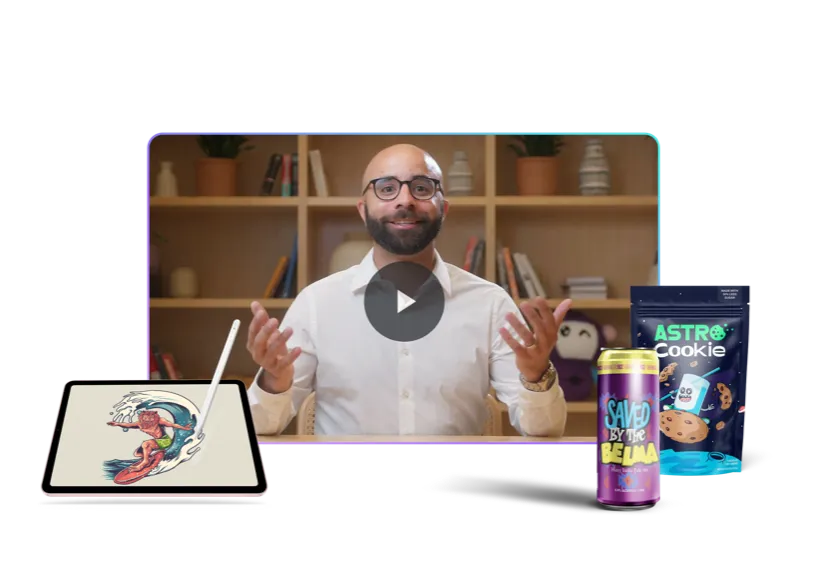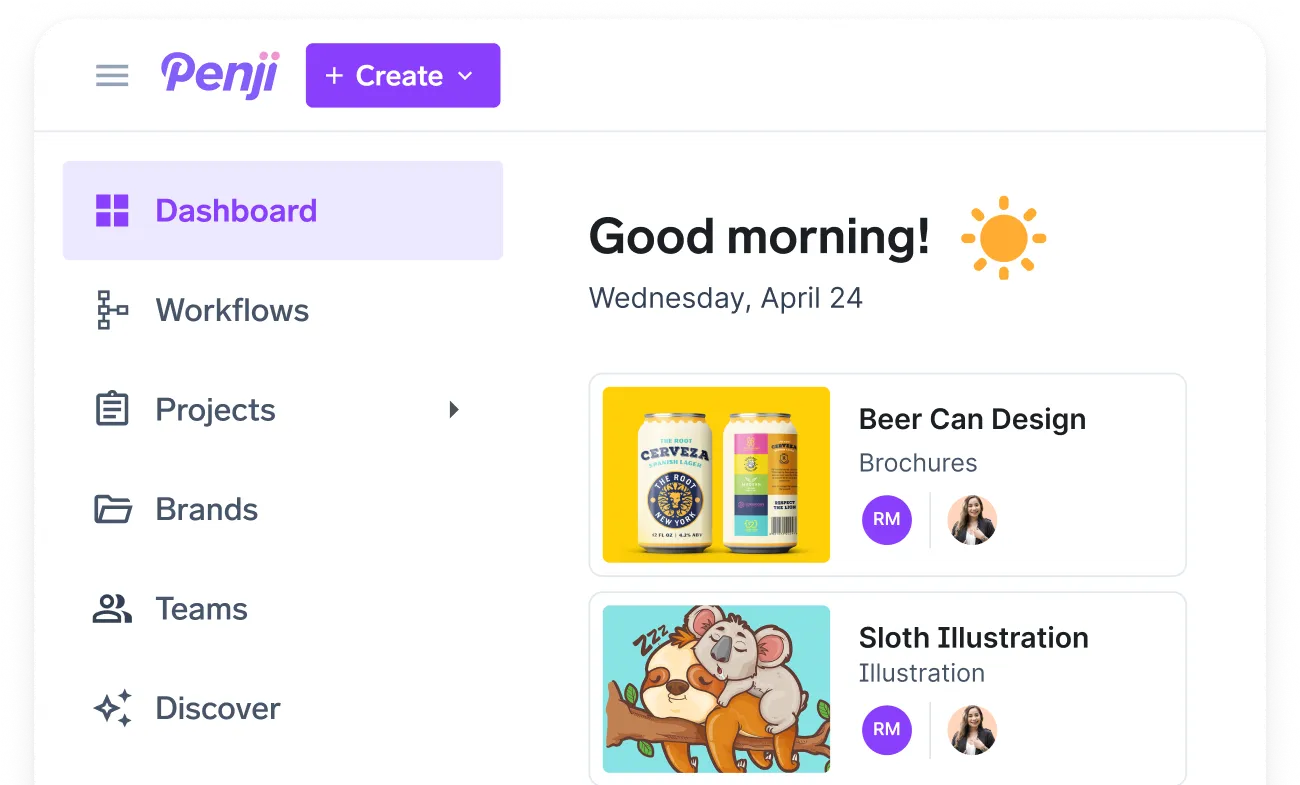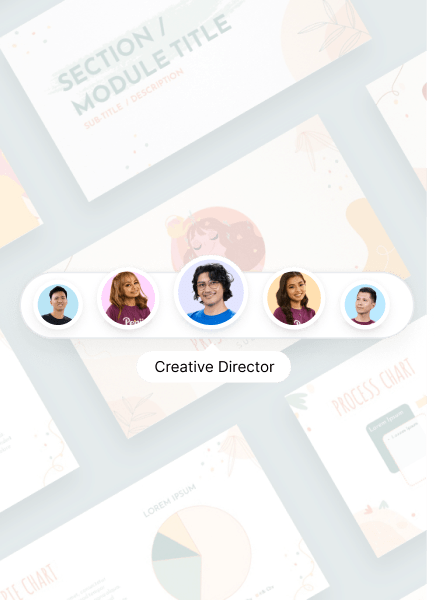![[Fully Managed] Jessi Bruton from Reputation Ink Ep. 201](https://penji.co/wp-content/uploads/2025/08/BLOG-IMAGE-Jessi-Bruton.jpg)
Shannon: Hello, everyone, and welcome to the Fully Managed Podcast. Thank you, Jessi, so much for joining me. I really appreciate it.
Jessi: Thank you for having me on. Thank you. I appreciate that.
Shannon: So today we’re going to start with a game. This game is inspired by our chat before this. So to fill you guys in, Jessi was telling me that right now she’s kind of in her company’s kind of in this growth mindset, right? And that sometimes it’s difficult to navigate that situation when maybe like there’s not enough people to dedicate to certain things when you’re growing and all that stuff. So this game is inspired by that. So it is called prioritize or pulverize. So I’m going to give you a bunch of possible scenarios that you may even be met with during this growth period that you are either going to prioritize or pulverize. Okay.
Jessi: Let’s shoot.
Shannon: All right. Okay.
Game: Prioritize or Pulverize
Scenario 1: Designer Rage Slack
Shannon: Okay. First one, a junior designer just rage slacked. This brand guide is garbage. It’s three minutes before your client presentation. What do you do?
Jessi: Well, I’m just trying to think about, have I ever done that? Because it sounds like a very on brand thing for Jesse Irving Black. Three minutes before the client presentation. This is horrible. Not you, horrible. This is just saying that you’re saying that. Whenever it comes to things like that, there’s the alignment of expectation and reality. And so managing expectations and walking people through the process is a huge part of what we do.
I got into this business thinking that my job was going to be making beautiful things and being called a creative genius every day. I was mistaken. That is a much smaller percentage of my job than is the reality of the situation. It’s a lot of interacting with clients. It’s a lot of explaining outwardly that the creative process is iterative. It’s collaborative. It’s really not a reasonable expectation to just be like, okay, go away and come back. And it’s all done in one shot. And it’s not really informed by a lot of collaboration.
So that is how three minutes from now, talking to the client, we kind of manage those expectations and make sure that the relationship is preserved so that we can circle back and make good. Now, theoretically, this should never happen because I like to do check-ins far sooner than that. But there is, on our part as creatives, a certain amount of project management, a certain amount of professional courtesy that we extend to our colleagues to make sure that we’re not walking into something totally cold. We’re all aligned. We’re speaking with a united voice. And so that can be addressed a little bit privately. Again, after the client meeting that’s in three minutes.
Shannon: Mm-hmm, mm-hmm, for sure. No, I think that, so prioritize or pulverize?
Jessi: Oh, prioritize the client relationship.
Shannon: Yeah, no, I think so. Pulverize. Pulverize the junior designer, maybe. No, I definitely understand. I think that in that situation specifically, they’re talking to the client about what something is in reality is important regardless of maybe if you have to tell them like some harsh truths so that is something that you should definitely prioritize for sure but you know maybe the warning could be a little better realistic okay.
Scenario 2: Office Milk Debate
Shannon: Next one. Okay. There is a glow. There’s a growing slack thread debating whether to get oat milk or almond milk for the office fridge.
Jessi: Pulverize. I am cow milk all the way.
Shannon: Yeah, I agree. Okay. Okay. That one was just a silly one.
Scenario 3: Copywriter Looking for New Job
Shannon: Okay. Your best copywriter is quietly looking for a new job.
Jessi: Well how loud enough that you found out about it though quiet as a bull in a china shop I get that I’ve been there that is the reality of our business and theoretically if somebody is satisfied valued and challenged then hopefully there’s really good opportunities to retain people and most people don’t there have been times in every person’s career where they’re presented with an opportunity and they’re like I have no I have no beef with my existing place. I just see this opportunity and I need to leave. And at that point, all you can do is celebrate that person’s success because your collaboration, your coaching, your mentorship, you have been a part on the way to this person’s success. And we all live on the same planet in the same industry. Their success is my success.
If somebody is looking because they’re dissatisfied about something and it’s something that’s within my control, then okay, let’s see, is it more challenges? Is it more collaboration? Is it a sense of being valued? There’s lots of ways to change somebody’s impression of something to try and retain them. But the most important thing is making sure that you have the right people in the right fit. And if somebody has outgrown something and it’s no longer within the company’s control to give them that value, give them that sense, then, you know, all we can do is celebrate each other’s successes and wish each other well.
Shannon: No, I love that outlook because I do think there is, there’s definitely a point where you can see that someone is like quietly quitting or like looking to quit and find other opportunities. Definitely an opportunity if you do find out about that and you are not an evil person to look into why someone would want to and maybe adjust for that or figure out like something you can do if they are your best person on whatever team it may be. But at the same time, I do think there are specific instances where if they’re not actively looking, they were just met with the opportunity.
Like actively looking, I think means they’re not satisfied for so and so reason. But, or there’s also some people that are always background looking like regardless of if they’re happy. But I think that there are instances in which this is just something that I need to try. I need to look at this because it’s something that is so grand and something that looks so great for me. And I think that I agree should just be celebrated because that means that you actually support the people that you work with or work under you rather than just wanting them to selfishly be a part of you for the inevitable forever.
Jessi: Yeah. And I’ll be honest with you. When I was younger, things were a lot murkier to me. I felt very personally invested in my work. And so I felt very personally invested when one of my colleagues wanted to leave. I’m like, how dare you betray me? Leave me alone. But kind of having as many years under my belt in my career as I do now, it comes with a certain perspective, which is it’s not personal. It’s not about your team versus my team or rivalry or how dare you go to this competitor’s agency or this competitor’s business because most of the jobs that I’ve gotten throughout my career have been with people that I’ve worked with before. And our networks have expanded and we’ve had the opportunity to cross paths over and over again. So I know there’s a natural instinct to say, no, stay here. Don’t don’t don’t afford. But it’s just it’s all part of change as a natural part of life, including business life.
Shannon: Yeah, I want to agree. I think that acceptance of that shows that a like a lack of insecurity like it shows that you have a security in your business that it can survive without said person and I think that if you are so worried that everything will fall apart because you don’t have that person I think that you might have to look inwards a little bit more tenders probably some standard operating procedures that have been documented there’s probably something there there’s probably something else and I think that also if I think that it’s always uncomfortable to like let someone know that you’re thinking about looking for another job. But I think that truly, if you are so unbelievably comfortable and happy with where you are and you know that people will like react to that in support to you, then I think that when you create that kind of environment for someone to tell you that they’re like, they’re even looking is shows people, mountains of like about who you are and what your company is because someone like doesn’t think you’re going to act in a certain negative way because someone is, you know, like looking to leave and you also have more notice to replace them with someone who might be able to do the job in the same way they can. That’s a that’s a bigger conversation but regardless okay I’ll give you one more prompt these are the getting warm questions.
Jessi: I know it’s so funny I think we just like we expanded on them so well.
Scenario 4: Overwhelming Day
Shannon: Okay I’ll give you one more possibly silly one okay okay well this one more like maybe is work life balance a little bit when when it’s crazy okay you haven’t eaten lunch your inbox is on fire and someone booked you in back to back, thirty minute check ins.
Jessi: OK, I know that the smart answer, the reasonable answer, the work-life balance, what I should do when I am being my best self is you got to eat first because the hanger is real. You are not yourself when you’re hungry. And it’s just not a good time. So the right answer is grab a Fiber One bar, grab a banana, get whatever you can just inhale real quickly before the next call. The reality of the situation is you get tunnel vision and you get sucked in. And then hopefully you give yourself a cookie afterwards.
Shannon: I completely understand. I think I am… Sometimes I get sucked in where I don’t even realize that I didn’t have lunch, if it’s something like that. It’s just you… The healthier thing probably is to have lunch. But the reality of it is if you’re someone who gets sucked in easily or you have any kind of ADD or ADHD, you’re not going to remember that you had to eat. You’re just going to do it. Today in particular was one of those days where I woke up and I knew exactly what I was going to work on. And then by eight forty five, I knew that all of that was canceled and I needed to focus on a new fire. And then I looked up and it was like twelve fifteen. I’m like, where did I turn?
Jessi: Yeah, those days are horrible because you know you’re just pushing off the things that you did need to do or you knew you needed to do and now you have the new thing that you needed to do. It’s very funny. It’s a great phenomenon that happens to all of us, unfortunately.
Shannon: Well, we already had some great conversations already. The game is over. You did wonderful. You also provided a bunch of great advice during the game, which is amazing. This is a fabulous start.
Jessi’s Professional Background
Shannon: But anyway, so to talk more about you specifically, even though you kind of address some things. I want to know and for the audience to know about your professional journey up to this point so that people get a little context of why you’re giving this advice and then also what you’re doing now and what you want to do in the future.
Jessi: Yeah, absolutely. My name is Jessi Bruton. I am currently Senior Creative Director at Reputation Inc. I’ve been with Rep Inc. for a little less than a year now. And it’s a great small team. It’s an active growth mode. And one of the main reasons why I joined was The founder, Michelle, and I worked together many agencies ago, and I’ve always had so much respect for her. And it’s primarily been focused on public relations and content marketing up until now. And she had a real vision for expanding from that deep subject matter specialization to being slightly more full service and expanding into creative services, which is where I came in.
My background before working here really runs the gamut. I spent about a decade of my career in Northeast Florida in various advertising agencies. And now I’m currently located in Texas. I spent a handful of years in-house at Omni Hotels and Resorts and then at another local advertising agency here in Dallas. So I’ve had the real luxury of a background where I’ve worked on small teams where I was employee number six when I was hired. I have worked on large teams where just a creative team was a dozen and a half people in a hundred person agency, little bit of in-house, little bit of agency.
So it’s a really well-rounded background that allows me to empathize a lot more with the client perspective than I ever could when I was agency only. And of course, with the agency perspective, working with colleagues who are also fellow creatives and designers, and also colleagues that have backgrounds in marketing, writing, public relations, people who are not creative, but we need to collaborate to create the best possible end product.
Design Philosophy and Team Preferences
Shannon: That is wonderful. Do you have a preference for what you like in as opposed to like a large business or agency and or a small agency like do or maybe rather a preference because we don’t want to know based off of what you’re doing right now. Maybe that would be rude if it’s not what you’re doing. What are some likes and dislikes of each like the problems that you see with both?
Jessi: So something that I’ve experienced across all experiences, whether it is being the client, whether it is supporting the client, sometimes even when working alongside colleagues that are your teammates, is I think that there is a misperception when it comes to design, that design is surface level, make something pretty, make it visually attractive. And my favorite thing and where I found the most success is when design is much more than decoration. It’s strategic, it’s thoughtful. We always think about our messaging. What’s our core messaging? What’s a message that’s going to resonate with our audience? Well, messaging is verbal communication or written communication. Design is visual communication.
So if you can harness your visual and your verbal you can create something that’s more powerful than the sum of each individual part. And that’s where I get really excited. I don’t wanna know what’s your favorite color. I wanna know, What are you trying to communicate to your audience? What does success look like for your business? And then I’ll say, based on color theory, we want to evoke a sense of excitement. So we’re going to use this color. Or we’re going to evoke a sense of trustworthiness and credibility. So we’re going to use this very stable old school font and color palette to kind of convey that. That’s my favorite thing. The thing that drives me nuts is when people say, make the logo bigger and use pink because it’s my kid’s favorite color. No offense, but nobody’s opinion is more valuable than your bottom line.
Shannon: Yeah, no, I one hundred percent agree with that. I think that there are all these elements of design that people don’t really consider because they think it’s just this aesthetically pleasing thing, which, of course, that’s part of it always. But at the same time, it has this purpose of the idea of what is a brand identity and like the story behind what your brand is. Whereas for yeah, for example, the example that you gave of my kid’s favorite color is this. Like, but does Is this brand made because of your kid? Like, if so, maybe that makes perfect sense. Like, that’s the reason why people love that kind of story of, like, this is my brand because of this and this. Like, this is why it looks like this. Or, like, this is the inspiration behind this. That’s fun. And that gives, like, people love to get attached to something like that. But… There’s so many people that just like how something looks and that’s what they think is or they don’t like how something looks and that’s what they want to change. But they don’t understand that sometimes it’s not really your personal opinion of like what the color scheme is or what it is. It’s like what your how your audience reacts to it. And that’s like the whole goal.
The Value of Testing and Data
Jessi: Yeah. And on that note, one of my one of my previous teams that I was on, we had a really really strong media department that had a big background in testing and so that was a lot of fun because I was able to present creative concepts and our chairman would say well I like this but I don’t know about that like well how about this we’ll a b test and whoever wins will buy the other one lunch I’m not saying that charlie bought all of my lunches It was not exactly an even split.
But the great thing about testing is even when the first time it happened and my expectation didn’t win, I was a little butthurt about it. I was like, something must have been flawed with the test. The methodology was off. I reject this. But then I came around to it. And the thing is, even when I lose, I win because If I have a hypothesis and it turns out it’s not proven, what I thought was going to happen didn’t resonate with the audience, didn’t encourage a click, didn’t create a conversion the way that I expected it to, well, now my assumption is challenged and I need to go back and figure out how my assumption was off so that next time around, I’m going to be a little bit smarter. My work’s going to be a little bit more optimized. If you just go through life assuming that you’re right all the time then you kind of get static, you get stuck, you’re kind of in this weird middle. When you get challenged, then that’s where the growth opportunity happens.
Shannon: I completely agree. There’s something about the creative and marketing world that I love so much because you’re constantly learning. And there’s so many things specifically that you can even have evidence like to back up your claim of that something will work and it just doesn’t work the way that you want. And I think that’s so fun. It also does suck when you have that evidence and you lose or it’s not or you fail or whatever it may be, especially when the line is like, I just feel that this is not right and not because it’s there’s any like basis behind it it sucks when that happens but it’s also it’s a great learning moment to figure out okay well like why did this happen though because there’s clearly like a reason why this didn’t work and sometimes it isn’t something that necessarily means like oh you were a complete failure and everything that you thought was wrong sometimes it’s something very small like like something’s wrong with the website that you use like there is maybe that’s you know so that you can be right that’s fun as well but also There’s so many factors that go into like why something worked the way it did. And so to find out that why and also learn for the next time that maybe a similar situation happens is so great. And you don’t get to do that in a lot of positions. So it’s something that I think is really valuable.
Jessi: Yeah, for sure.
Navigating Growth Mode Challenges
Shannon: So talking about what’s going on right now because I think this is something in the agency world that is so common especially when it’s we go from like a startup to something that is getting even bigger and bigger so you mentioned to me as we talked in the beginning for the little game that you guys are in kind of a growth mindset right now. I hate that term. But and there are a lot of moving factors and sometimes it’s difficult to navigate teams and different projects based off of like maybe when we grow, we don’t have the ability to go and hire because you have so much stuff going on for different positions and stuff like that. What do you think the biggest challenge is navigating the situation?
Jessi: That is a great question. I have a lot of thoughts on it.
Shannon: I’m ready. Give it to me.
Jessi: So the funny thing about being in growth mode is that when you are achieving success, you are growing the work that you are receiving. You are convincing people that you are a credible partner and qualified, and they want to give you money to do the thing that you do best. That is success. But then you look at your calendar or you look at your Asana task list or whatever project management software you use and you’re just like, this doesn’t feel like success because I’m working ten hour days and I’m still not clearing my queue like this. This is objectively successful, but it doesn’t feel like it. And so there’s inherently that push and pull where you need to cultivate the business in order to reach that threshold to grow your headcount. But until you reach that threshold, you’re still doing more than a single person’s capacity. So how to navigate that icky middle.
Solutions: Streamlining Creative Briefs
Jessi: My team has done a handful of things over the course of the past year that has helped us with that. It’s still not a perfect situation. But at the very least, we’ve kind of approached it in a way that allows us to be a little bit more strategic and objective instead of just, I feel overwhelmed.
So the first thing that we’ve done is we put a lot of work into streamlining our creative briefs, how we capture information from the client on a project and then convey that in our project management system to the designer. Because something that’s really easy, especially on a small team, is to just forward emails, sling over quick messages. You know, we talked about this in our meeting the other day. So, like, I don’t need to go through the whole rigmarole of documenting every single bit of information because, you know, it’s Jessi. I know Jessi’s going to work on it.
If you get to a threshold where you might need to engage an outside person, a freelancer or what have you, then all of a sudden you can’t just talk to that freelancer the way that you would Jesse because that person doesn’t have the context. the historical information, the institutional knowledge about the client. So by just as a matter of exercise and standard operating procedure, by being a little bit more thoughtful and intentional with how we capture our information in a project management system using creative briefs has really made it when we do need to flex to engage a third party. there’s no longer a huge burden of a hurdle to overcome in terms of packaging up that information because it’s already done. It’s muscle memory at this point.
Shannon: And you have a lack of less, room for misinterpretation or miscommunication because you’re conveying something maybe differently than what it happened during that time based off of memory or like just, you know, all these different things that now you can just, everyone has a baseline information to be able to share with others.
Jessi: Absolutely. Because even when we engage a third party freelancer, I’m still very involved. It’s not just like, okay, that’s totally off my plate, off my radar. Because something that I have seen over and over and over with client projects is if you don’t have a single overseer then if you have a handful of freelancers working on things different designers all paint with their own brush and so you end up with a smattering of things that somehow they they all meet the brand standards they all use the same colors and fonts and photography but in different ways and with different design elements so you have a bunch of things that are all on brand per the brand standards, but yet don’t look exactly the same. There’s kind of a lack of a common thread of consistency.
So that’s where I come in. Even when I’m not doing something firsthand, I look at every single thing to provide some sort of feedback to say, hey, this could look a little bit more like this, or let’s leverage that so that way it’s a little bit smoother. And once we have a full library of things done for a client, they all look like they all belong in the same family. And I couldn’t provide thoughtful feedback if I didn’t know the direction that our person was given. So those creative briefs really become our single source of truth for everyone, the person doing the work and the person reviewing the work.
Shannon: That is so incredibly helpful. I do think that streamlined processes like that are so incredible for being able to make sure that everyone’s on the same page. I think that kind of, When you interact with so many clients, too, I think it’s very difficult to stay on track of remembering exactly what the vision was from the beginning if you don’t have it properly documented. And it’s even harder when you have to talk to multiple people about what that means and for different purposes. So it definitely is great to have a streamlined process like that where everyone’s used to doing this so that you can send out the same information to everyone and know that they have the same direction. And then it’s easier to critique in the idea of making sure that it’s on brand with what your vision was in the first place.
Jessi: Absolutely. And I had the opportunity to become a certified scrum master in a previous role. I’m a creative and yet here I am doing project management things. One of the core tenants of Scrum is consistency eliminates complexity. All of our lives are already so complex. We’re dealing with multiple client points of contact, multiple clients. If by doing one thing the same way, every time that consistency can remove just a single layer of complexity, it just takes so much cognitive energy out of the equation.
Shannon: Yeah, it’s definitely… When you’re in a growth mindset, there’s so much that is happening at once, especially if you’re having things like ten-hour days or there is you are keeping track of more people than a single person can keep track of like obviously project management software really helps but of course it’s so difficult to navigate that in your brain so to have something that you’re regularly used to doing those systems are incredibly helpful not only for the average person but someone with very rampant ocd like me If there’s not some kind of consistency in a product, in some kind of project, then there’s nothing, my head is just like on fire. Everyone is running around in there.
So outside of this thing, because it seemed like you were getting at like multiple things that you’re running into, what else is something that you deal with during this process?
Strategic Outsourcing Framework
Jessi: So that was one thing that we did kind of, Sorry, my brain just rebooted. This is not recorded live. So working on the creative briefs and kind of streamlining our internal communication was something that we did just kind of as a matter of operational hygiene, if you will. That’s a benefit that we reap even within our internal team, but it has set us up for success for when we’re in growth mode and we have more things to do in too tight of a timeline than we can accomplish and we have to ask for help, we have to look outside for help.
Now, one thing that anybody knows, you don’t need a you know, MBA to know that profit is the difference between revenue and cost. And so the more work you bring in, your revenue can go up. Yay. But if your costs go up because you’re spending a lot on outside resources, then that’s not an ideal scenario. So you need to do these things very thoughtfully and intentionally.
So something that we did is we established very specific criteria for when it’s time to talk about looking outside for resources. The first criteria is, of course, what do our internal resources look like? Are we slated for the next two to three weeks having full, you know, thirty to forty hours of billable work? Or is it under that threshold? If it’s under that threshold because we know something’s on the horizon, but it hasn’t hit yet, etc. But the first thing is, If we have capacity, then it’s a non-starter of a conversation. So in the first question of the flow chart, yes, no, that’s kind of a no-brainer.
The next question is a little bit more sticky and nuanced, and that is, What projects do we have in our queue that lend themselves to going out of house? Some projects make sense for me to do because the client is new. They don’t have clearly established brand guidelines. We’re in kind of a creative mode where creative direction is a little bit loosey goosey and not very clear. So having something in house because we’re in experimentation mode might make sense and really doesn’t lend itself to going out of house. versus, OK, well, something that we’ve already done a brochure for this client for one particular business line of theirs. We need a new brochure for two additional business lines. We’re creating new projects, but they’re based on something that already exists. So the direction is pretty clear to marry new content with existing visual. That really lends itself to going out of house.
On that same note kind of question to be if you will is our resources are they a good match we have some resources who are gifted when it comes to animation video all things digital but you give them a print project they’ll take it because they’re professionals and they’re you know they have adobe indesign they can do the things but you get a different work product from them than you do somebody who really specializes in print materials or signage or what have you. So there’s also a certain element of being thoughtful about what resource is available and what kind of is their realm of genius.
Shannon: No, I think it makes complete sense to have to delineate what is necessary to have outsourced because there I think that a lot of people do fall in the trap of outsourcing something that even though it might feel helpful is almost a burden because you might be able to do it better yourself or in-house or whoever is related but there’s also many scenarios in which outsourcing is extremely helpful and can get a lot off your plate and I think it’s the dynamic of knowing when that’s supposed to be It’s the same thing with AI tools of like, there are a lot of things that can be helpful that you can incorporate into your work. But if you incorporate too many, one, you have to learn how to use all of them, which is a feat in itself. I’m not technologically savvy, so that’s a feat for me. But on top of that, it’s like you’re disrupting, incorporating a new thing into your system is disrupting the system. And so if you’re doing it all at once, in different places, then you might destroy the system or like make it much more difficult to navigate, even though you’re incorporating these things to make things easier. So it’s like a balancing act of knowing what will actually be easier, which I completely understand.
Data-Driven Decision Making
Jessi: Yeah. The big thing is we kind of learned through a certain amount of trial and error is we needed to be intentional and methodical and kind of what we were talking about before, where it’s like, your brand’s color shouldn’t be based on your feelings. It should be based on your strategy and what goal you’re trying to achieve is by taking a little bit of the, I feel overbooked, I feel underworked, I feel this out of the equation and establishing really thoughtful criteria around those things. Then the conversation stops being about, I feel like we should do this. And it starts being, this is, the criteria that we’ve all agreed on to accomplish our goals.
Shannon: No, I think that is very important. It’s not a lot of people, especially if it’s like they’re the founder of their company or they are so deeply invested in it. They have a lot of opinions that maybe aren’t necessarily warranted with fact. It’s just that they feel a certain way because their company is their baby and they want it to be exactly how they curated it in their mind. But they don’t realize that clients are a little, in certain cases, more important than your vision sometimes. And in probably most cases, but especially with brand identity, I think it’s, like, it’s a very difficult situation to navigate sometimes with someone that cares so deeply about their business. Because if they built it from the ground up, they have a very particular way of, like, what it should be like. But sometimes they don’t understand that, like, that might not resonate with the audience that you’re trying to interact with. So it’s definitely incorporating all of those systems and also having those conversations is difficult, but awesome. And you guys are doing it, so it’s awesome.
Conclusion
Shannon: Well, we are grossly over time, but I think that means that it was very, very fun and we had a great conversation. So I’m going to stop us here, but thank you so much. This was so fun. And I really do think this is a great glimpse in trouble that every agency deals with at some point. So I love the transparency with this. So thank you so much for that. And providing helpful advice for something very real that happens to all of us, whether we’d like to admit it or not.
Jessi: Absolutely. It’s been it’s been my pleasure. Thank you so much for reaching out and for the invitation.
Shannon: Yeah, of course. Thank you again. And yeah, thank you everyone for listening. I hope you got as much knowledge out of this as I did. And we’d be nothing without you. So continue to watch other episodes to get to learn like I get to every time. Thank you so much, everyone, and have a lovely day.














